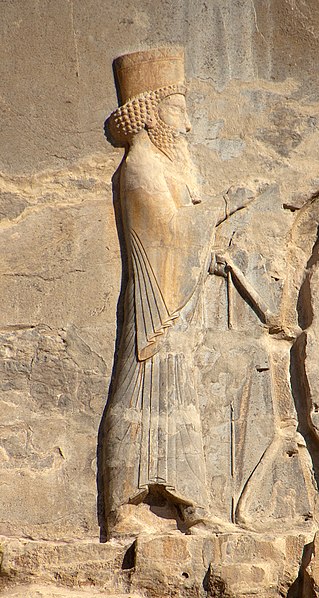The Battle of Cunaxa was fought in the late summer of 401 BC between the Persian king Artaxerxes II and his brother Cyrus the Younger for control of the Achaemenid throne. The great battle of the revolt of Cyrus took place 70 km north of Babylon, at Cunaxa, on the left bank of the Euphrates. The main source is Xenophon, a Greek soldier who participated in the fighting.
Retreat of the Ten Thousand, at the Battle of Cunaxa, by Jean Adrien Guignet
Portrait of Artaxerxes II.
Army of Artaxerxes II, as depicted on his tomb at Persepolis.
19th Century English School depiction of the Battle of Cunaxa
Arses, known by his regnal name Artaxerxes II, was King of Kings of the Achaemenid Empire from 405/4 BC to 358 BC. He was the son and successor of Darius II and his mother was Parysatis.
The Rock relief of Artaxerxes II in Persepolis
Retreat of the Ten Thousand, at the Battle of Cunaxa, Jean Adrien Guignet
Armoured cavalry of Achaemenid Hellespontine Phrygia attacking a Greek psiloi at the time of Artaxerxes II and his Satrap Pharnabazus II, Altıkulaç Sarcophagus, early fourth century BC
The King's Peace, promulgated by Artaxerxes II in 387 BC, put an end to the Corinthian War under the guarantee of the Achaemenid Empire.







